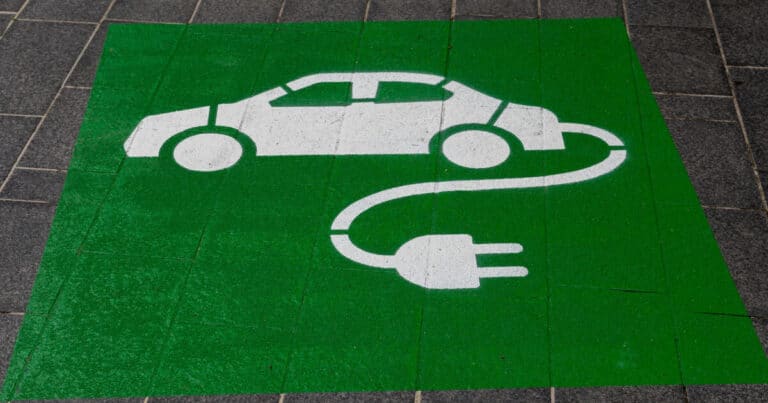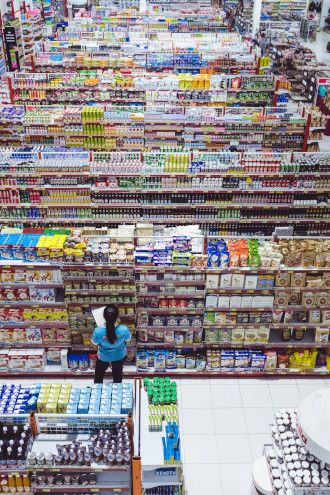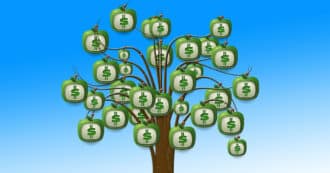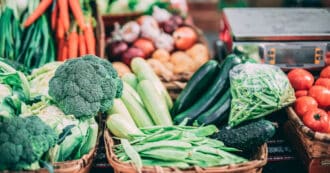By Ilana Stein – Walk into a shop in a developed country, and the choices are enormous – of goods, brands and prices. The shelves groan with food, the fashion stores are filled with clothing… and all this points to a healthy economy. Or does it?
According to the Oxford English Dictionary, the word ‘consumerism’ can have a positive or a negative connotation – in other words, fascinatingly, the same word can have two contradictory meanings, depending on how you read it. On the positive side, consumerism means “the protection or promotion of the interests of consumers”, while the other definition is: “the preoccupation of society with the acquisition of consumer goods” – a somewhat critical understanding of the word.
Human beings initially bartered for goods that were necessities for survival. As society developed, the concept of money, and economics, came into being, but the idea of paying for goods produced by others, as a sign of one’s wealth, was still one that only happened to a small minority of people across the world.
In the 19th century, as the Industrial Revolution took off, this began to change. In Britain, for example, the amount and variety of foodstuffs on shop shelves increased, allowing people to buy more than just the necessary basics. This took place in the United States at the turn of the century, where large department stores and the mail order system increased to the extent that overproduction became the norm.
In order to accommodate this, the very culture of society began to change. This culture said that the only way to be happy was to spend money on acquisitions; indeed, money now was the basic measure of one’s value in society. A sure sign of success was not just how much money one had but how much one spent. The markets and businesses pushed this – and people began to change their behavior, to create what is known today as a consumer-based society.
Are Consumerism and Happiness Connected?
Today not only are we all consumers, but to many, this seems to be a good thing – something that helps drive the world’s economy. Investopedia defines it in this way: “Consumerism is the idea that increasing the consumption of goods and services purchased in the market is always a desirable goal and that a person’s wellbeing and happiness depend fundamentally on obtaining consumer goods and material possessions.”
The system of economics works on buying and selling, on spend and save – where it is money rather than love that makes the world go around. But does this mean that we should buy everything we can? Must the drive to possess and consume to such an extent be our defining characteristic? And, does this really make us happy?
Perhaps it’s time to start thinking further than the next shopping spree.
Ethical Consumerism
It may be too late to step away from the system of consumerism – although some have tried, as the concept of anti-consumerism states. There is another way however, and that is to look ethically at the wealth of products or services on offer – known today as ethical consumption or ethical consumerism.
The concept arose in the last years of the 20th century, indicating a slow move from conspicuous consumption to responsible or ethical consumption. Here, the consumer consciously takes responsibility for his/her purchasing of products by understanding that there is more to the product than how it looks on the shelf.
In other words, every element of the item purchased across the supply chain, from the source material to the workers involved in manufacture – the entire production line – is taken into account from the point of view of values. Where does the raw material grow – and has growing it destroyed something else? Who are the workers involved in each stage of production, and what are the labor practices? Do they get a fair wage and are they treated fairly? Is the process of manufacturing environmentally friendly or does it pollute the air or water?
Since then, ethical consumerism has taken on political and civil overtones. The act of choosing one product over another allows the consumer to take back power from the production system. By choosing a product based on ethical values held by the individual, producers can be pushed to change their practices to fit in with the buyer’s values.
Ethical Labels
But how can a buyer know what product is ethical? Enter a system of certification where each product must prove to the prospective buyer that it has been made or sourced in an ethical manner. Through this, companies are able to market themselves as ethical brands or ethical products.
The Green Label. The rise of the environmental movement in the 1970s led to the idea of “being green” – and to that of green consumerism – where the customer attempts to avoid purchasing products harmful to the environment and rather buys products and services that try to minimize environmental damage. It is defined as: “Consumer behavior under which the consumer purchases a product which is more environment friendly than the alternatives and is least harmful to the environment.”
This covers everything from source to end point, for example, from habitat or species destruction to the fossil fuels used to get the product from source to manufacture to shop, and in between, pesticides or animal testing on the product.
Fair Trade. By the 1990s, the green label was followed by the concept of fair trade – a principle that states that fair prices are to be paid to the producers of goods in developing countries by producers who are in developing countries.
One of the most successful, global certifications is Fairtrade International, which “enables farmers and workers to have more control over their lives and decide how to invest in their future.”
The Morality of Consumerism
Do the labels work? Latest research shows that while people like to see themselves as ethical consumers, their buying habits say differently. One issue is ethical consumer fatigue as well as “greenwashing” (false marketing). However, on the upside, certification has helped to bring ethics into the market.
The proliferation of labelling means being conscious at every point in the shopping process, and reading every label in sight; this can become tiring and lead to “consumer fatigue.” But, more and more companies believe that being responsible suppliers will ultimately help the economic health of the company – and help their sustainability too.
Ethical products – a Brief Survey
Basically almost everything in almost any form can be looked at from the point of view of ethical products or practices. For example, here are the main categories found on The Ethical Consumer website:
- Energy – This looks at fossil fuels that generate electricity, renewable energy options, biogas and ‘vegan’ energy, energy prices, fracking and fuel poverty.
- Food and drink – The food production system effects people, animals and the environment, as it is inherently related to animal welfare and even climate change. This area covers slow vs. fast foods, vegan and low carbon diets, pesticides, fair trade and labor issues, animal cruelty, environmental damage such as palm oil production and packaging.
- Fashion and clothing – The fashion industry suffers from worker and labour abuses, toxic chemicals, and high fossil fuel emissions across the supply chain. Today, there are small, independent ethical and sustainable brands and companies that are creating sustainable clothes. The battle against mass production lines continues however.
- Health and beauty – This covers a range of issues such as animal testing, plastic pollution, palm oil and toxic chemicals, unethical practices in the cosmetics industry. Increasing numbers of products are not just “animal friendly” but vegan. However, price is still a barrier to many people changing their behavior in this sector.
- Technology – While technology is often seen as helping to create the answer to many of today’s environmental issues, it is also infamous for low wages, bad labour practices, tax avoidance and conflict minerals.
- Travel – The use of fossil fuels to get from A to B is an obvious issue , but there are other ethical issues being looked at in the transport sector, such as car companies cheating emission tests, and toxic chemicals. On the positive side are increasing greener travel options, such as bicycles and the electric car.
- Home and garden – In this category, possibly thanks to our preoccupation with our own health, there are hundreds of ethical brands, from green cleaning products to organic fertilizers.
Consumerism and Religion
A primary value in religion is the idea that the world belongs to a power greater than humanity. During the Sabbatical Year, for example, farmers and producers renounce their ownership of their land and produce – in this way detaching from the world of money, property and consumption.
On the other hand, religion can be used to create hyper-consumerism. In the 1920s, the image of Santa Claus was co-opted by advertisers and stores, creating a Christmas holiday where religion was used to promote more sales. This has been followed by other religious holidays and even memories of Saints also celebrated through hyper-consumerism.
Each person who chooses to buy ethical products adds a powerful voice to the type of world we want to live in. Although it can seem like a single purchase doesn’t make a difference, it is a deep part of religious belief to recognize that every decision we make has an effect on the entirety of Creation. Our spending power helps, one item at a time, to change the world to one that is more sustainable, ethical and hopefully better, not only for businesses but for the individual and the individual’s children – and helping the planet in the process.
* Featured image source









